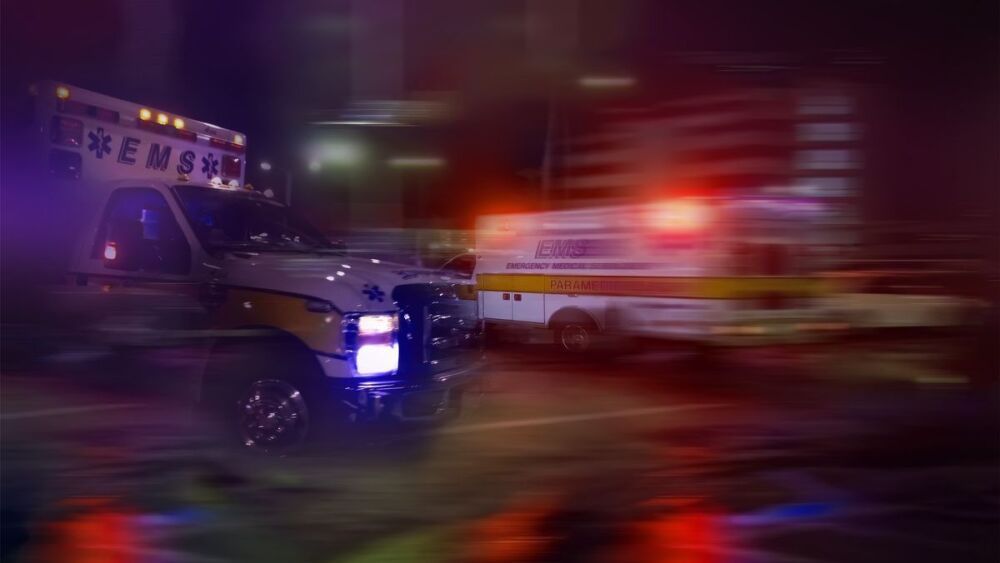Just clicking through the EMS1 news recently, one thing has become exceptionally clear – the amount of ambulance-involved accidents seems to be on the upward swing. I also mentioned this to several colleagues who reliably informed me that some of the more severe incidents were under review by NHTSA investigative teams – the land equivalent of the FAA’s air crash investigation team. As always, I look to the root cause to see what is going wrong: are the accidents single-vehicle, EMS operator fault or third-party impact?
The jury (and in some cases, there may well be a jury) is out now, but a recently published NHTSA Traffic Safety Facts Research note entitled “Continuation of Research on Traffic Safety During the COVID-19 Public Health Emergency: January - June 2021,” offers up some clues.
The report shows increases in the number and rate of fatalities per 100 million vehicle miles traveled. It notes, “after the declaration of the public health emergency in March 2020, driving patterns and behaviors in the United States changed significantly.” Since the declaration of the Public Health Emergency, vehicle drivers have evidently engaged in riskier behavior, including speeding, failure to wear seat belts, and driving under the influence of alcohol or other drugs. The report cites data showing that average speeds increased during the last three quarters of 2020, and extreme speeds – those 20 miles per hour (or more) higher than the posted speed limit – became more common. Earlier research reports showed changes in the prevalence of alcohol and other drugs during the pandemic among those seriously or fatally injured in motor vehicle crashes.
Speed
It is clear that automotive recklessness is a long COVID symptom, and this places us all into heightened danger on the streets and highways. Further evidence shows that overall miles driven fell by 13% as quarantine and homeworking increased, but highway fatalities rose 23% from the previous year with 1.37 deaths per 100 million miles driven. Speed is a major factor. California saw a 5% increase in fatalities last year and highway patrol officers issued nearly 28,500 tickets for speeds over 100 mph, almost double the 2019 total. CHP also arrested 232 people for reckless driving – a 150% rise – and are on pace to exceed that this year.
Distraction
Distraction (particularly when combined with speed) is a real killer. Gathering metrics to definitively demonstrate distracted driving is in its infancy, but Cambridge Mobile Telematics reported increases in the incidence of phone manipulation per kilometer of driving through March 2021 compared to January 2020 baseline observations. Further, they reported that the 10% of most-distracted drivers have an insurance loss frequency that is 2.2 times the 10% of least-distracted drivers. Separately, Zendrive analysis showed increases in cell phone use among drivers after the mid-March 2020 start of the public health emergency. In addition, their analyses suggest that in more than 16% of the crashes their algorithms detect, a cell phone was manipulated less than five seconds before impact
The National EMS Information System released “EMS By the numbers” in an effort to help state EMS officials track particular EMS activations occurring during the COVID-19 pandemic.
It is clear that an uptick in traffic incidents is a long COVID consequence. While there may be less traffic on the road, there is also less due care and attention, and more risk. This places the onus on EMS crews to ensure that they keep as safe as possible.
We are called a crew for a reason
The risks of driving with red lights and sirens are now well documented. In EMS response, it takes two people to get to the patient as safely as possible. The driver drives; the passenger – who is effectively the vehicle commander – navigates, observes and monitors. The emergency response to a call is not the time for the person in the right seat to break out the laptop and continue charting. The crew resource management notion of the sterile cockpit should apply:
- No non-essential chatter
- Focus on the road and road users
- Try to anticipate the actions of others
- Drivers should have nothing else in their hands other that the steering wheel
On Scene safety
Once at your destination, the threat isn’t over. You don’t have to be on an interstate with traffic flashing past to be in harm’s way. Narrow streets, poorly lit alleys and even parking lots do not offer a safe haven from distracted, drunk or careless drivers. Your parked road position, blocking apparatus and even the place you chose to stand may well be an impact point.
Like all things COVID, there never seems to be any good news and the deteriorating standard of driving adds to the woes. Situational awareness is a key asset when vehicles of mass destruction are likely to appear at any time. More often than not, you are the ones that may have to move over, so be prepared. Stay safe everyone!
Read more:
Roadway incidents are a hot zone for EMS
Roadway LODDs are tragic reminders of the importance of time, distance and shielding to reduce hot zone risk





